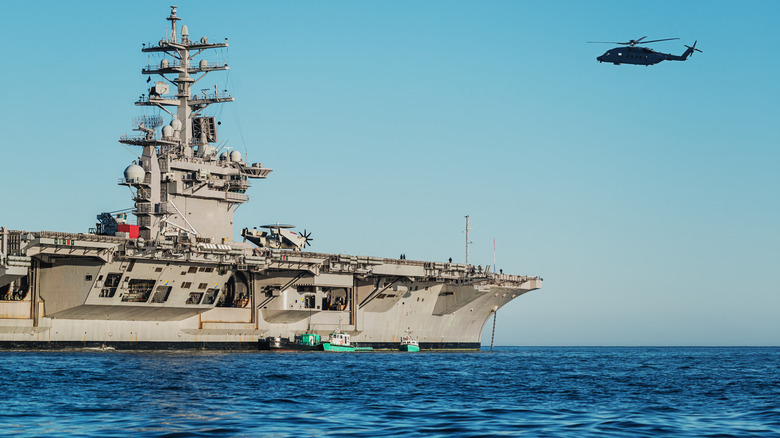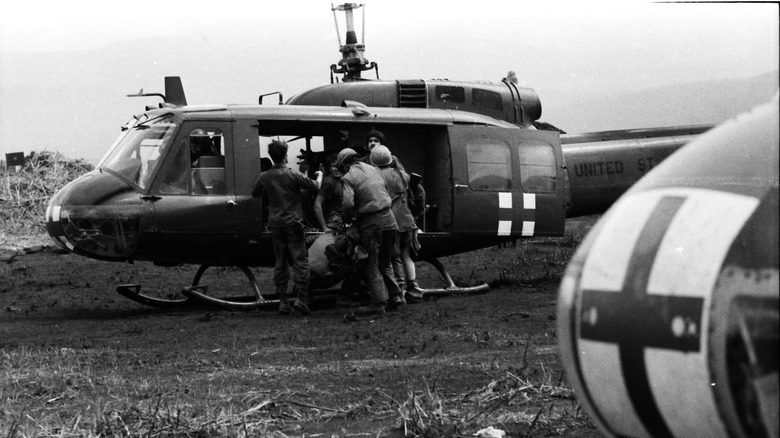Why The US Navy Still Doesn't Have An Attack Helicopter
All branches of the U.S. military utilize an assortment of highly effective and state-of-the-art weapons, gear, and vehicles for combat missions. That's also true of aircraft, including helicopters, which are a vital asset for the Marines and Army. But the U.S. Navy relies more on choppers for anti-submarine warfare and rescue operations, instead of using them purely as attack helicopters.
In fact, the Navy has worked on initiatives like ConOps 2.0, a study which determines the overall effectiveness of helicopters, and how many an aircraft carrier even needs. ConOps also examines the mission capabilities of helicopters and just how effective they really are. That's where factors like flight deck size come into play, as anti-sub military helicopters like the Sikorsky MH-60R Seahawk are bigger than ever and taking up more room. Rather than pursue a new line of attack choppers, the Navy seems content to focus on overall efficiency, and not just combat.
Even the Navy's iconic and highly trained SEAL teams don't always utilize Navy helicopters for mission deployment, instead choosing to use Army or Air Force aircraft. That's because Navy choppers are already tasked with a variety of purposes, and special operations aren't always at the top of the list. The Navy's HSC-85 helicopter reserve squadron is set up to support the SEALs when needed, but only in a limited capacity.
The history of the US Navy's attack helicopter squads
There was an effort by the U.S. Navy to support combat missions using attack choppers during the Vietnam War. The Helicopter Attack Squadron Light (HAL-3), also known as the "Seawolves," took flight in 1967, operating the U.S. Army's UH-1E Huey helicopters, which are still in use. The Seawolves engaged in air assault and support, as well as combat search and rescue. Not long before the war ended in 1975, the Seawolves were deactivated, leaving behind an impressive legacy of 78,000 combat missions over 131,000 flight hours. As of this writing, HAL-3 stands as the only U.S. Navy attack helicopter squadron of its kind.
The Navy did revisit the idea of attack helicopter squads in the late 1970s, with HAL-4 and HAL-5. However, these squadrons were mostly used for armed escort, fire support, and assisting SEAL teams. Once again, Hueys were the choppers of choice for these units, though they were eventually replaced with the HH-60H Seahawk. The Seahawk not only had better range than the Huey, but it could carry more weapons to support a variety of operations.
As the years went on, the HAL squads evolved with the times. Eventually dubbed the Helicopter Combat Support Special Squadrons, both units continued to fulfill their roles as combat search and rescue teams. All of this took place under the watchful eye of the Navy, which depended on these versatile squads to carry out special forces missions as well.

